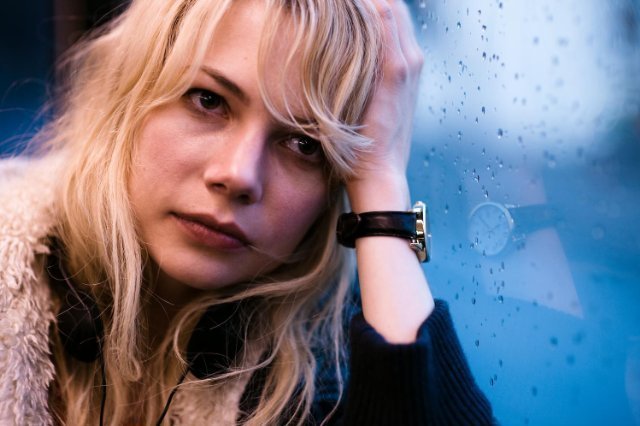 |
| (Blue Valentine/Weinstein Company, 2010) |
Blue Valentine—the new Sundance smash hit, the film that “showcases” the talents of A-list actors, the latest independent film that shows life as it is—is unfortunately all that and nothing more. That isn’t to say that the film doesn’t stand on its own two feet; for more than an hour it’s compulsively watchable and clever. But, like the relationship it portrays, there’s too much exasperation on both sides of the screen. The audience wants too much from it and the film is a little abusive.
The film stars Ryan Gosling as Dean, a working class would-be Casanova and Cindy (Michelle Williams), a pretty townie who never left rural Pennsylvania. It begins with a view of a sloping main road heading out in to the woods, suggesting nothing but sadness further down. This is the road that Dean and his daughter Frankie peer down, anxiously awaiting their missing dog, who will never return. Dean smokes, paints houses and coddles his daughter while Cindy stays stressed at work and tries to instill some discipline in the house. Their backwoods domesticity—tall grass, wood and breakfasts shot in grungy close ups—is gradually revealed as a slow act of disintegration, sparked by the red-herring of a missing dog.
It is tempting to describe Blue Valentine in linear terms. In fact, the film is constructed through ad nauseum flashbacks that overlap a trip Dean and Cindy (she with reluctance) take to an erotic motel far outside town. The scenes showing how the two met and gradually got together are shot, mostly, with no visual distinction from the scenes in the present, lending the film a peculiar matter-of-fact presentation. Director Derek Cianfrance has a literary taint to his style, and at its best his story plays like something Flannery O’ Connor and Edward Hopper might have produced if they had collaborated on a film. But the rhythms of the whole piece are based on the aggressive back-and-forth from past to present, the insistence on domestic tension, and the cocky, unhinged way Dean expresses his frustration. These rhythms overwhelm the film by the last quarter. While the film could have easily ended shortly after Dean receives a beating from a key character, Cianfrance isn’t content with merely letting his story conclude. He has to take in the whole longview, and as a result, the film begins to berate us in the same way Dean begins to berate everybody around him. The climax is a cannonade of sunny flashbacks heaped on a meltdown in a kitchen; the final scene involves a fireworks show that feels heavy handed and portentous.
 | |
| (Blue Valentine/Weinstein Company, 2010) |
Yet still; Gosling and Williams are there the entire time, in nearly every shot. Even when we don’t particularly like either of their characters, we at least like the two actors. Even when the goings-on get screechingly sentimental, there is a level of believability to the way each scene presents itself; on near-empty buses, high bridges, clinically miserable hallways of hospitals. It may be to Blue Valentine’s credit that the film appears to want you to change your mind about the story again and again. It could just be a sign of an audacious novice. Whatever the case, it’s a manipulative, dysfunctional, occasionally beautiful relationship.




